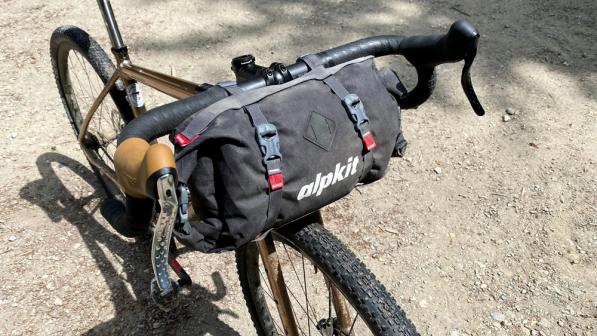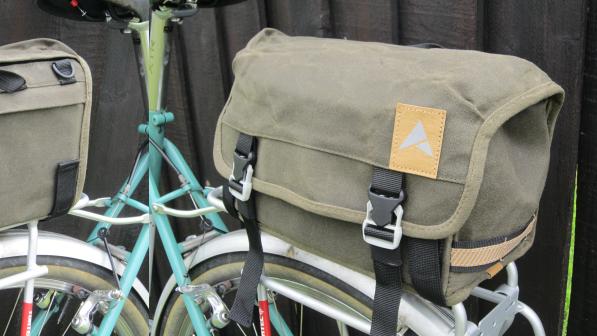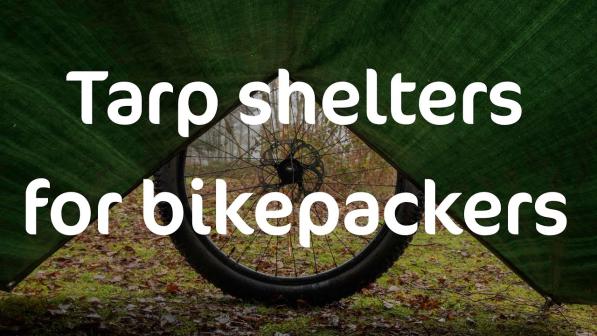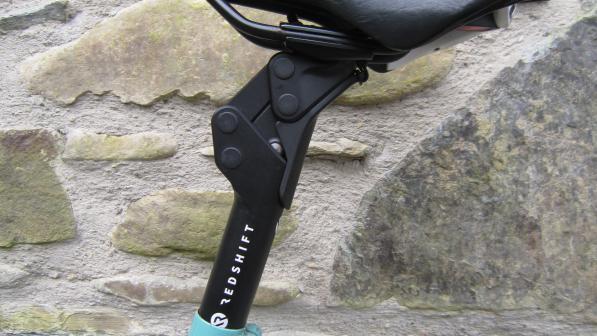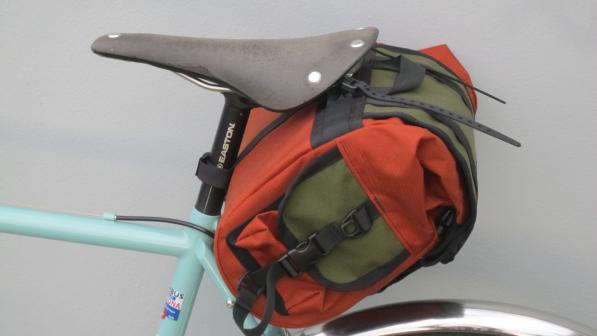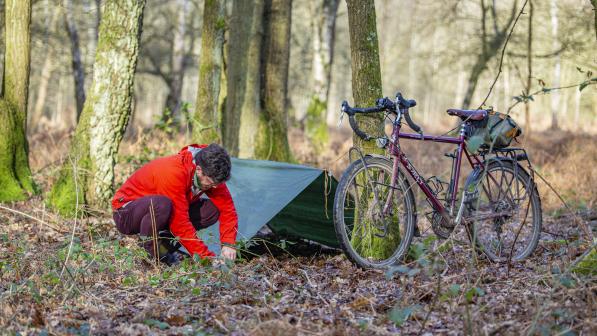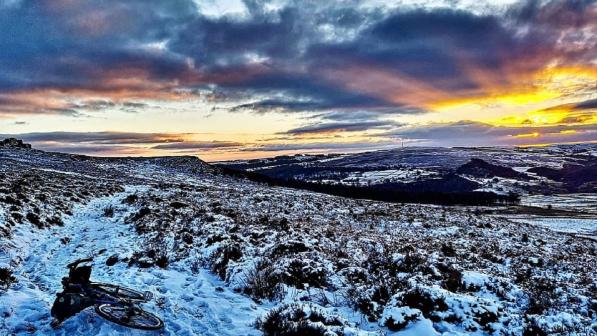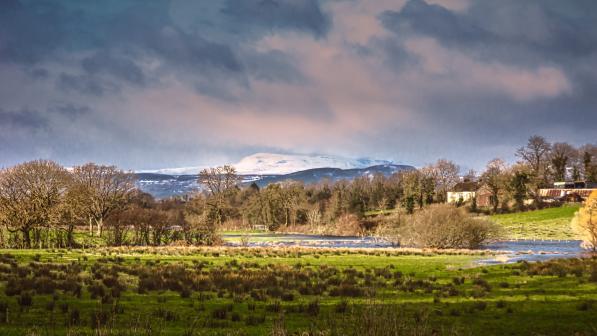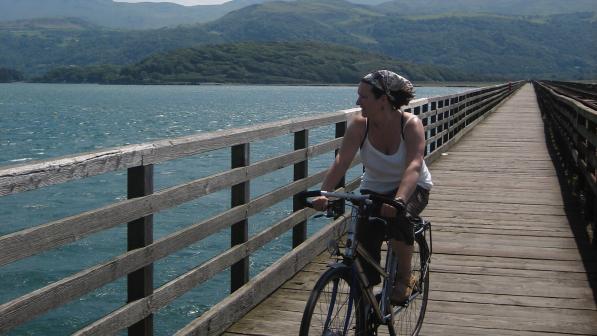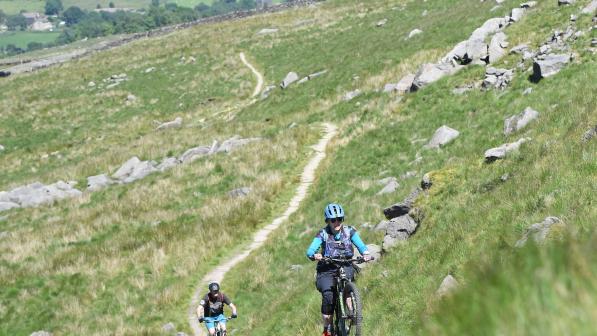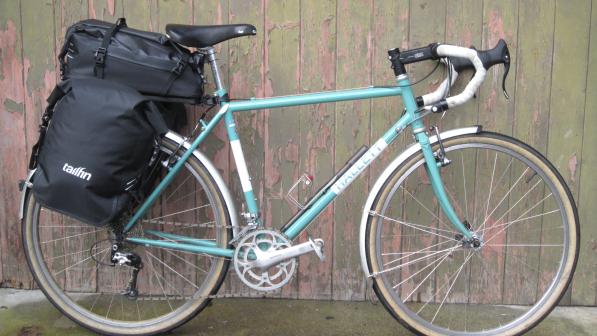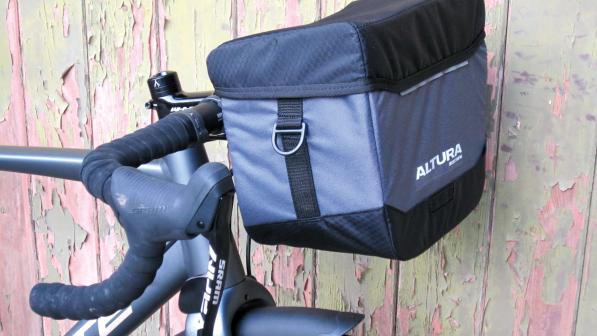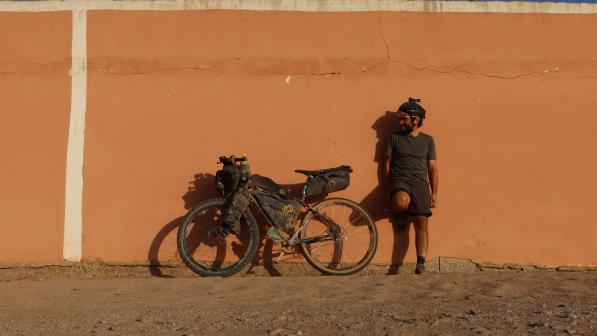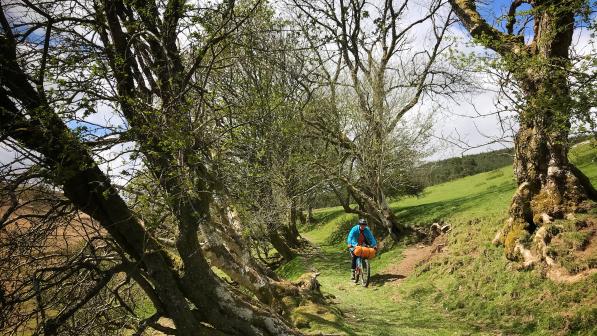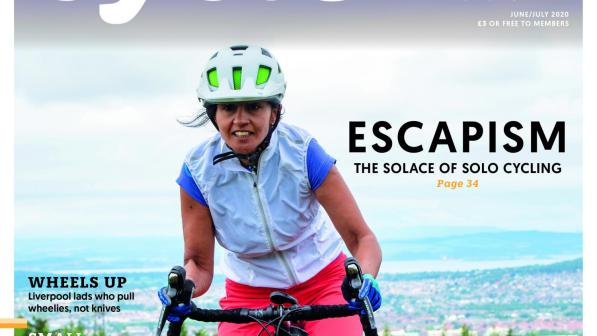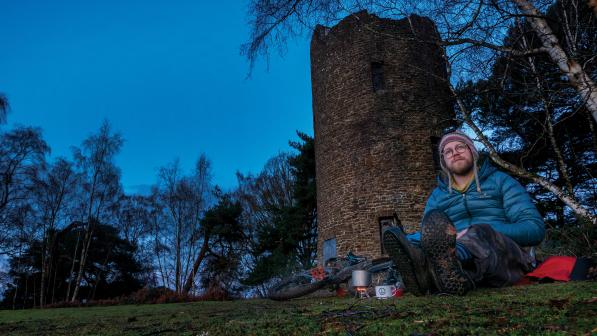Group test: seatpost bags for bikepacking

The beauty of bikepacking (as opposed to traditional cycle touring), is that when it comes to luggage, usually you don’t need to purchase extra kit like racks to fix your luggage to.
You just pack and strap the bag to your bike, and off you go.
Seatpost bags tend to be smaller than the traditional pannier setup, which means you have space only for what you need. Because you’re taking the essentials, and there are no racks, bikepacking is usually a ‘lighter load’ experience.
For riders keen to head off road, this streamlined way of carrying your luggage means there’s less chance of things like panniers getting caught in the undergrowth, and generally (if you pack correctly) your bike should still be nimble enough to tackle the sort of terrain an unladen bike could.
After a frame bag – which can be a costly commitment if you’re going custom – a seatpost bag is often one of the best ways to carry a large amount of luggage in a way that should not affect the handling of your bike.
To fit these, you will usually feed straps through your saddle rails and then have an attachment to your seatpost – simple to set up and take off.
For the purpose of this test, we’ve put four different sorts of seatpost bags through the wringer. Three of the bags have been on long-term review, while the Shazam from Wizard Works has only had day trip use during lockdown.

1. Restrap Saddle bag (14L) £105.99
- Clearance required: > 20cm
- Weight: 630g
- Variation: 14L tested. Smaller 8L version available (£99)
Handmade in Leeds, this isn’t just a lovely bit of kit to look at, it’s highly functional. I loathe having to keep taking my bag on and off when out on the trails, but with the Restrap, you get a super stable holster for a dry bag.
It takes the faff out of packing, and makes things so much easier at the end of the day. The other handy feature of a holster is that you can also slip flat objects – tarps or fish for instance – under the dry bag, making separation from wet and dry kit (or smelly food substances) a bit easier.
Made from 1000D military-grade cordura, and with nylon webbing, the holster is a hardy bit of kit, and after a wet winter’s worth of use it would look as good as new (if I cleaned grime off it).
Easy to use in all conditions – from finger-numbing cold to downpour – it really is a bit of kit that has had a lot of thought put into it; the magnetic clasp is super simple to use, and secure, and there are plenty of clips to keep tightened straps from flapping. There’s also a secure place for your rear light.
Even on the bumpiest of trails, I barely noticed the saddle bag, which I put down to the wonderful holster.
The dry bag itself is, as you’d hope, completely watertight. It’s spacious and slips easily into the holster, making packing easy for the overnight stops, and also not too much of a challenge if you need to get something mid-journey.
The additional benefit of the secure holster is that it is a lot more friendly to the less-experienced bag packer. You’ll soon learn the lesson of making sure heavier items are towards the bottom of the bag, but at least with this bag it’s not so essential.
In terms of niggles, I had three – but they’re hardly deal breakers.
There’s a webbing on the underside of the holster. Most of my bikepacking is off road, and in the UK that means a lot of trail dirt is chucked up at this area. I can’t really see the point of it – though if I used mudguards, I could see the benefit.
The dry bag is light, waterproof and awesome – but I’d like a little valve to squeeze out the extra air when packing. That being said when speaking to Jon Hicken from Restrap, he rightly pointed out that you can get most of the air out with a good squish, and more importantly: “A valve also introduces a possible point of failure, so to make the bag as dependable as it can be we’ve opted to leave it out.”
When packed to the gunnels, I did struggle get my XL Voile Straps round the holster and bag – but that is a reflection of my less frugal packing and not really a downside on the bag. Bungees would have no trouble and similarly Restrap stocks straps that can handle a full seatpack.
Verdict: a top notch bit of very well thought out luggage.

2. Wizard Works Shazam! saddle bag £179
- Clearance required: > 20cm
- Weight: 880g Cordura fabric / 710g Xpack VX-21
- Variation: smaller version currently in design phase
- More photos available on Cycling UK’s Instagram feed
The Shazam! might seem the odd one out among the other seatpost bags in this review, but saddlebags and their design have a long-established pedigree in UK cycling circles and with good reason.
They’re highly functional, and can fit a tonne of kit inside, while still being accessible. To my mind they’re perfect for bikepacking, especially if you’re not a race whippet looking for aerodynamics but enjoy taking in the scenery.
The Shazam! takes the traditional saddlebag, usually associated with Carradice, and cranks it up to 11. Handmade in London, with its origins coming from craftsman’s Harry’s desire to create fun and functional bags for his own trips.
His friends loved them, and a side hustle in bag production became a full time occupation, with the Shazam playing an early part in the Wizard Works range.
The price is high, there’s no getting around it, but this is a bespoke bit of kit where the buyer has the opportunity to discuss with Harry the merits of different types of fabric and get the colour patterns they want, with only the webbing and straps coming in Henry Ford black.
It comes with a lifetime warranty, can be repaired, and is a well-made bit of kit which I reckon will give you more than your money’s worth over time.
The fluorescent pink and camo combo wouldn’t have been my choice, but in the flesh it’s actually a really neat combo of ’80s action flick (think Arnie in Predator) and the sort of colours I’d imagine from the rave scene back then. It shouldn’t work, but does. There is an array of tamer colours for the more conservative cyclist, too.
The luggage capacity is only bested by the venerable Carradice Long Flap, and can hold a whopping 22.5L in the main compartment (10.8L when not fully extended), plus has two 0.5L pockets (ideal for stowing inners). The shape of the main compartment is maintained by a 1mm HDPE Sheet, which meant once the bag was attached securely, it barely moved.
On my test rides around the Surrey hills under lockdown, I was able to fit my whole sleep system – tarp, sleeping mat, two season sleeping bag, inflatable pillow and bivi bag – as well as picnic for two and still have loads of space.
The liner is a bright yellow, which makes things easier to find, and because the opening is essentially a massive rectangle, as opposed to tiny dark holes like most seatpost packs, packing and unpacking is a simple exercise where you can actually look, rather than feel, for what you’re after.
The main compartment is sealed by a Velcro strip, which folds down to be held in place by an extendable ‘long’ flap. This long flap is equally handy for bulky picnic blankets or a small lightweight tent – my MSR Hubba Hubba fits if the bag isn’t overpacked.
A neat touch is that unlike traditional saddle bags, the Shazam! doesn’t have an entry point for water through the attachment points. Instead the webbing allows the included Nano Voile straps to be used in an array of locations.
However, by its design it’s never going to be as watertight as the other bags on review, so you’ll still want to make sure everything is tucked away in dry bags – something you should do anyway.
The straps are incredibly secure, very easy to adjust and reduce faff for taking the bag on and off.
Where the Shazam! falls down in comparison to other seatpost bags, is its requirement for specific kit when fitting to your bike. You need a saddle with loops, like Brooks or Spa saddles, or another means to attach the bag like Carradice’s SQR or bagman QR systems.
For the purpose of the review, I tried using a Bagman, but despite having a smidgen more than the recommend 20cm clearance, there was clear rub from the bag on my rear wheel.
Using supports for the Bagman would probably have eliminated this, but rather than sourcing new gear, I instead attached the bag on the handlebars – apparently like 60% of Shazam! purchasers – where I found the fit secure and interfered minimally with my steering. That versatility and flexibility is a clear benefit, in my mind.
If I could, I would change one thing and look to have larger side pockets with more fitted lids – I’ve not lost anything from them yet, but it’s always a concern something might just bounce out.
Verdict: a great expedition bag that can be tailored to fit your personality.

3. Ortlieb Seat-pack (11L) £125
- Clearance required: > 17cm
- Weight: 325g
- Variation: larger 16.5 L version with webbing on top.
Ortlieb is a household name in touring circles, as they make bulletproof panniers, and have a customer service second to none.
This expertise in recent years they’ve been turning to bikepacking gear with medal winning results – including the seat pack range.
The lightest of the four bags – and also probably the most tested too – this seatpack is a rugged bag that’s endured the worst of British winters, and my haphazard use of it. The latter was in part due to initially using a Brooks Flyer (with two inch springs) that severely reduced the clearance between saddle rails and my rear wheel.
This meant various contortions and excessive tightening of buckles to prevent the dreaded wheel bump, the result after one particularly cold ride was the plastic of one buckle deciding it had had enough, and shattered.
With most of the other bags in this review, this would have been a disaster, but thanks to the design of the compression straps which have Velcro tabs on the end to prevent dangling, I was able to rig up a means of closing the bag securely, which I then used for the next three months quite happily.
When I finally got round to contacting Ortlieb to see if they could fix this, it was done in a week.
Since replacing my saddle, and using on bikes with sufficient clearance, I’ve found this bag a treat. The only reason it doesn’t rank higher is because I like to have more capacity to carry kit, and packing in the wild (I find) requires removing from the bike, which I’m not a fan of doing (even though it’s not necessarily a difficult task).
Compared to the other bags on review, Ortlieb’s offering is a lesson in Bauhaus functionality, and pleasingly simple aesthetics. At its heart, it's just a simple roll closed dry bag, which will fit securely to your bike and keep your belongings bone dry.
The details though, are what make it a pleasure to use:
- A nice wide mouth makes packing easier, and the waterproof fabric holds its shape while doing so. To close, you then roll the fabric down, and use two heavy duty plastic buckles to fasten it securely
- A common problem with such roll bags is trapped air – which can make the bag bulkier and awkward to close. Ortlieb gets around this problem by fitting a waterproof valve – as you roll the bag closed, you leave the valve open. This pushes the air out, meaning you can then close the valve when all packed and secure. Simple – but very effective and something I wish other dry bags had
- Similar to Ortlieb’s pannier range, there are two Scotchlite reflectors on the back, which help you stand out on night rides, particularly to other traffic. Handily, there is also a vertical daisy chain to which you can attach your rear light to as well
The price is high, especially when for the same price or less you could buy a pair of panniers from the same company.
Verdict: simple efficient no nonsense way for carrying your luggage and keeping it dry.

4. Passport Seat saddle pack (m) £59.99
- Clearance required: >18cm
- Weight: 475g
- Variation: larger 9.8 L version.
This was my first bikepacking bag, and together we went through those early learning experiences we all must go through when exploring the boundaries of a new activity.
Its price point is clearly aimed at the beginner (though Podsacs has a very similar design for £20 – see Cycle magazine for review), and it was a great bag, but one I soon realised was not really designed for my type of riding.
The slim design lends itself more to the rider aiming for aerodynamics, and makes for awkward packing, though it is fairly robust and well made.
The Passport Seatpack seems to be the best thought out of the Passport range of bikepacking bags. Based on my experience, though, if I was to buy from the range again I’d settle for the slightly larger version and be a bit more careful with the way I packed it.
The thick tarpaulin base acts as an excellent mudguard, and even when fully packed there was little to no tail-wagging.
After a year’s worth of (ab)use, though, there was a bit of wear in the base, and a tear had started where the outer fabric had taken a regular pounding from the plastic moulded shell flexing up and down on the move. Gorilla taped up, two years on it’s going strong, and still watertight.
It’s easily fitted and adjustable on the go. A hi-vis waterproof liner ensures your kit stays dry, while also helping maintain structure, and making things a little easier to hunt for when packed.
It is a narrow bag, though, so think carefully about what you might need during the day unless you want to drag everything out.
When fully packed, there are fittings to take a rear light – but half full I struggled to find a placement I was happy with, so it’s going to be more suited to ‘loaded’ riding in winter months, than just having it fitted to carry a few bits and bobs.
There’s a secure bungee net for sticking a jacket in, and two handy little zipped side pockets (perfect for a head torch).
My gut feeling is that the range and this bag is geared to the gravel or adventure bike owner looking for overnight adventures, rather than a bush-whacking expedition on a mountain bike.
If that’s the kit you’re after, however, it’s well worth considering.
Verdict: Good entry level bag for overnight gravel riders.
